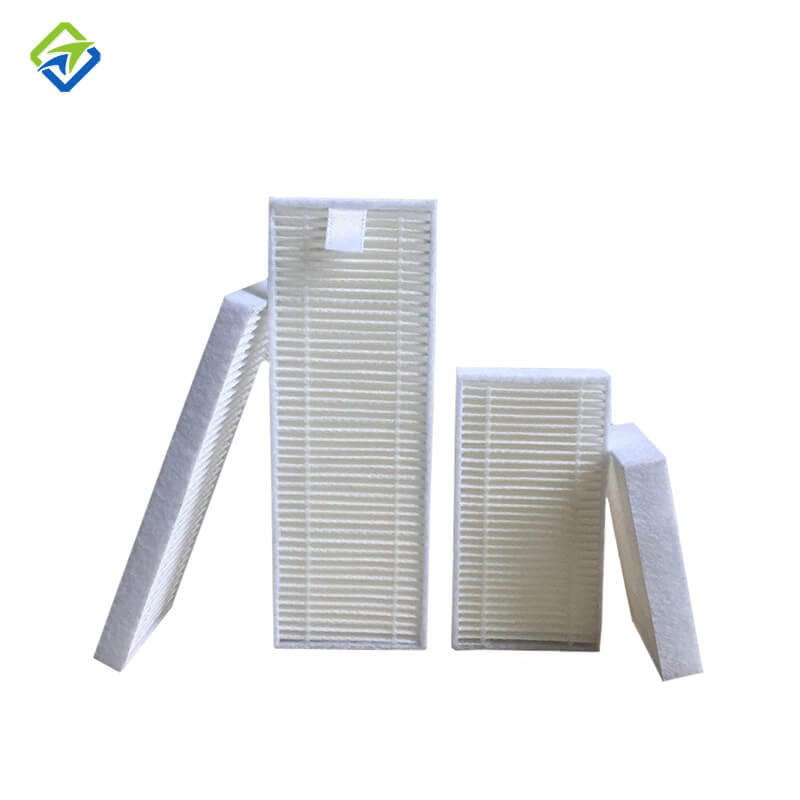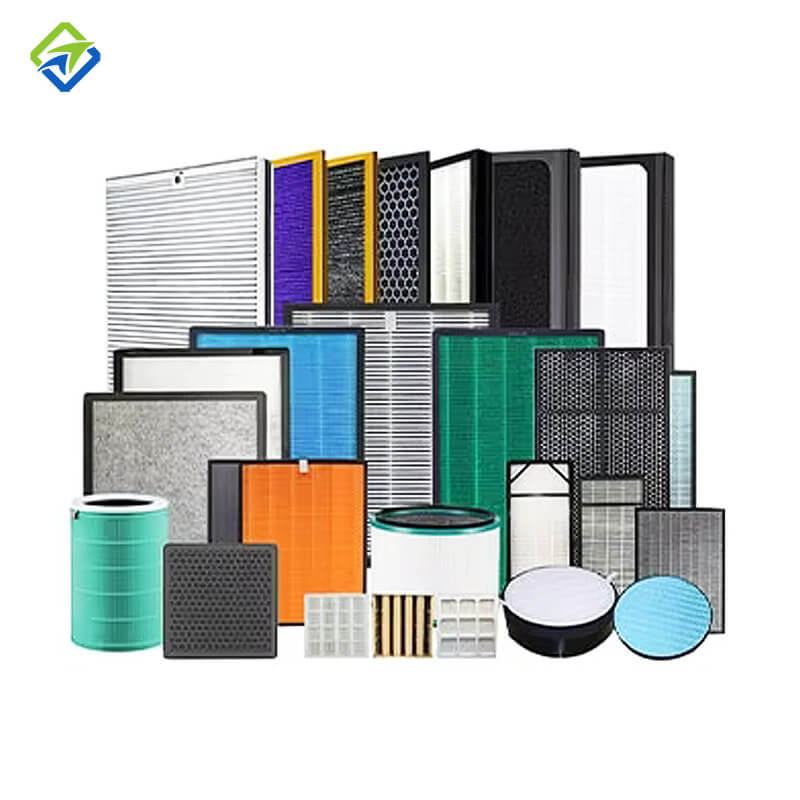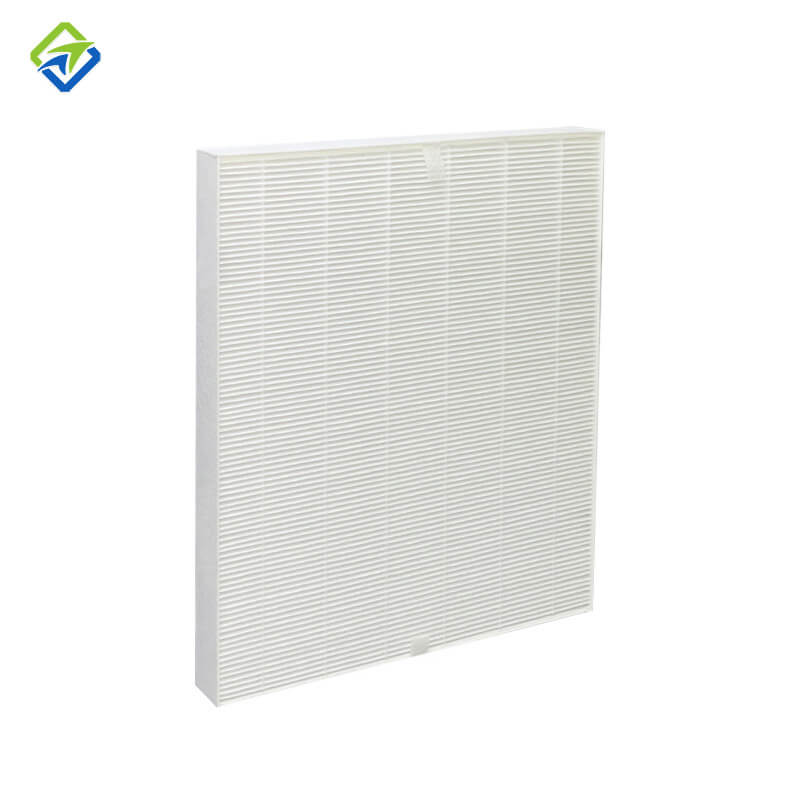When your child stops sneezing uncontrollably during pollen season, when the musty smell in the basement fades away, when you no longer wake up with a stuffy nose—these small victories over indoor air pollution often have one silent hero: the HEPA filter. But have you ever wondered how this humble device manages to capture invisible particles floating in the air? Today, we'll take you behind the scenes of HEPA filters, exploring their working principles in simple terms and why they're trusted as the gold standard for air purification.
What Exactly Is a HEPA Filter?
First, let's clarify a common misconception: HEPA isn't a brand or a specific product, but a technical standard defined by international regulations. The term stands for "High-Efficiency Particulate Air" filter, which means it must meet the strict criterion of capturing at least 99.97% of airborne particles as small as 0.3 microns in diameter during testing. To put that in perspective, a human hair is about 50-70 microns thick—so HEPA filters can trap particles 200 times smaller than that!
This standard originated from military technology during World War II, initially developed to protect scientists from radioactive particles. Post-war, it gradually entered civilian life, becoming a lifesaver for allergy sufferers, asthma patients, and families with babies. Unlike ordinary filters that only block visible dust, HEPA filters target the most troublesome "invisible threats"—pollen, mold spores, pet dander, smoke particles, and even some bacteria.
The Four "Invisible Hands" of HEPA Filtration
A HEPA filter looks like a simple pleated sheet, but its internal structure is a sophisticated "particle capture system." When air passes through, four scientific mechanisms work together to trap harmful particles—let's break them down one by one:
1. Diffusion: Dancing with Tiny Particles
For particles smaller than 0.1 microns (like some viruses and smoke particles), they don't move in straight lines in the air—instead, they bounce randomly due to collisions with air molecules, a phenomenon known as Brownian motion. The HEPA filter's dense fiber structure creates countless obstacles for these wandering particles. The longer they travel through the filter, the more likely they are to collide with fibers and get stuck—like a lost traveler wandering into a maze and unable to find their way out.
2. Interception: Stopping Medium-Sized Particles
Particles between 0.1-0.3 microns (such as fine dust and mold spores) move in more stable paths. When they pass through the HEPA filter, if they come close enough to a fiber (within one particle diameter's distance), they get "caught" by the fiber's surface tension—similar to how a spider's web catches flying insects. The pleated design of HEPA filters increases the surface area, creating more "interception points" to capture these tricky particles.
3. Inertial Impaction: Tackling Larger Particles
For larger particles (0.3-10 microns) like pollen grains and pet dander, their momentum keeps them moving forward even when air flow changes direction. When they hit the dense fibers of the HEPA filter, they can't make sharp turns in time and crash into the fibers—just like a car unable to stop at a sharp bend and hitting a guardrail. This mechanism efficiently handles the particles that cause most allergies.
4. Electrostatic Attraction: The "Hidden Helper"
Many modern HEPA filters add an electrostatic charge to their fibers during manufacturing. This creates a "magnetic field" that attracts particles with opposite charges, enhancing capture efficiency—especially useful for ultrafine particles that might otherwise slip through. Think of it as adding a layer of "sticky tape" to the fibers, making it harder for particles to escape.
Why 0.3 Microns? The "Most Difficult to Capture" Challenge
You might wonder: why does the HEPA standard specifically target 0.3-micron particles? This isn't arbitrary—it's the most challenging size for filters to capture. Smaller particles are easily trapped by diffusion, while larger ones are stopped by interception or impaction. But 0.3-micron particles slip through these mechanisms more easily, making them the ultimate test of a filter's performance. Meeting this standard proves the filter can handle all larger particles and most smaller ones with even higher efficiency.
This is why when you see a "True HEPA" label, you can trust it to filter not just visible dust, but the invisible threats that trigger allergies and respiratory issues—providing comprehensive protection for your family's breathing.
Beyond the Filter: How HEPA Systems Work as a Whole
A standalone HEPA filter can't purify air effectively—it needs to work with other components in an air purifier or HVAC system:
• Fan system: Creates airflow to draw polluted air into the device. The strength of the fan determines how much air can be processed per hour (CADR rating), which affects purification speed and coverage area.
• Pre-filter layer: Catches large particles like hair and lint first, preventing them from clogging the HEPA filter and extending its lifespan—like an "advance guard" protecting the main force.
• Activated carbon layer (in many systems): Adsorbs odors, formaldehyde, and volatile organic compounds (VOCs) that HEPA filters can't handle—making the air not just clean, but fresh-smelling too.
Together, these components form a complete "air purification chain": polluted air enters, large particles are blocked, fine particles are trapped by the HEPA filter, odors are absorbed, and finally, clean air is released back into your home.
Why HEPA Filters Are Irreplaceable for Home Use
Ordinary filters or "HEPA-like" products may claim to "filter dust," but they lack the precision engineering of true HEPA filters. For example:
• Vacuum cleaners with HEPA filters release cleaner exhaust air, preventing dust from being recirculated into your home—critical for families with allergy sufferers.
• Air purifiers without true HEPA may reduce visible dust but leave behind mold spores and pollen—explaining why your allergies persist even with the device running.
• HVAC systems with HEPA filters purify air as it circulates, ensuring every corner of your home gets clean air—not just areas near standalone purifiers.
For families with babies crawling on floors, seniors who spend most time at home, or anyone sensitive to air quality, HEPA filters aren't a luxury but a necessity. They work silently 24/7, turning your home into a safe haven where every breath feels fresh and reassuring.
How to Ensure Your HEPA Filter Works Effectively?
Understanding the working principle also means knowing how to maintain it properly. A neglected HEPA filter won't perform at its best:
• Regular replacement: Depending on usage and air quality, replace HEPA filters every 6-12 months. Clogged filters reduce airflow and efficiency—using an overused filter is like wearing a dusty mask.
• Clean pre-filters monthly: Washable pre-filters should be cleaned regularly to prevent large particles from reaching the HEPA layer—simple maintenance that significantly extends filter life.
• Avoid touching the HEPA filter directly: When replacing, use gloves to prevent oil and dirt from your hands clogging the fibers, which reduces effectiveness.
• Choose certified products: Look for "True HEPA" or "HEPA H13/H14" certifications from reputable labs. "HEPA-style" or "HEPA-type" filters often don't meet the strict 99.97% standard.
Breathe Easier, Live Better
Every time you hear your air purifier's gentle hum, remember the complex science working behind the scenes: diffusion guiding tiny particles astray, interception stopping medium-sized threats, impaction blocking larger invaders, and electrostatic attraction mopping up stragglers. Together, these mechanisms create an invisible shield protecting your family's health.
Choosing a HEPA filter means choosing to understand and control your living environment. It's about knowing what's in the air your family breathes, and taking action to make it cleaner. After all, clean air isn't a luxury—it's the foundation of a healthy, comfortable home.
Ready to let science protect your family's every breath? Start by checking if your current purifier has a True HEPA filter—or if it's time to upgrade to one that does. Your lungs (and your loved ones') will thank you.
Explore our full range of air filters and find the perfect solution for your needs. If you need assistance purchasing filters or confirming filter size, please call +1 929-204-8922 (9-5 EST Monday-Friday) or email info@gdhaibei.com.











